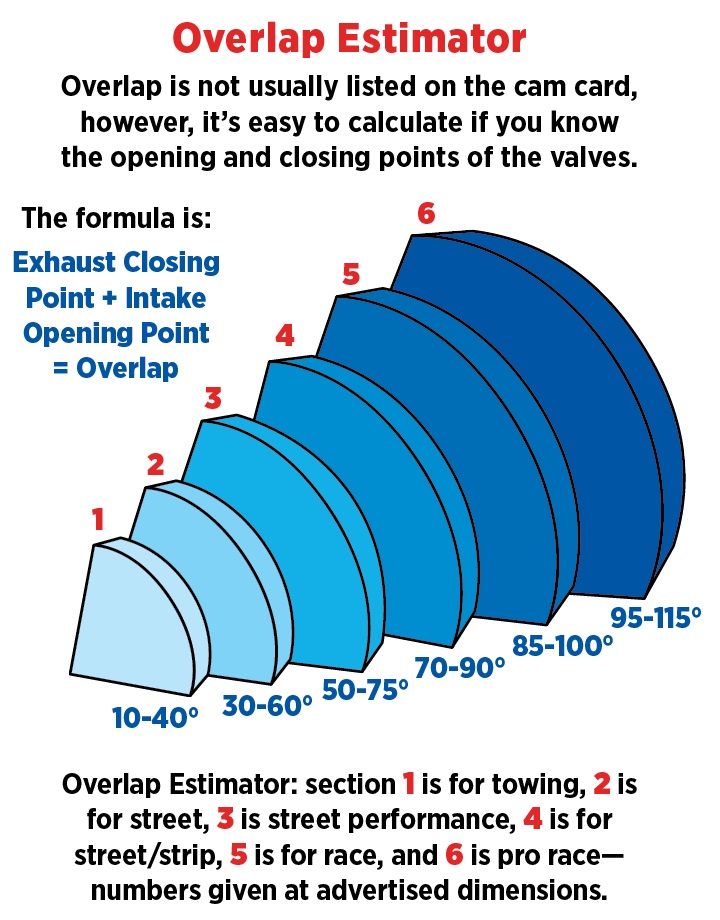Aftermarket camshafts can add significant power to an engine when properly matched with other parts. But remember, the camshaft grind doesn’t just determine engine rpm operating range, it affects peak manifold vacuum as well.
While displacement, intake manifold design, valve size, and piston ring seal also play a role in vacuum, valve overlap is the most significant factor.
As valve overlap increases, idle quality and vacuum degrade. An engine must maintain a minimum of 16-17 in.Hg of vacuum at idle to retain vacuum boosted power brakes without requiring alternative solutions.
A typical 350-based street engine can usually handle a cam grind with up to 60 to 70 degrees of valve overlap and still have enough manifold vacuum to operate power brakes. But even then, matching engine components to the camshaft is critical for it to perform efficiently.

Dual-plane intakes are best for street applications because they separate the manifold into two plenum sections. Each plenum and set of runners connects to every other cylinder in the firing order (180 degrees of crankshaft rotation between pulses), unlike a single-plane manifold with pulses every 90 degrees.
Exhaust reversion is reduced with a dual-plane design, increasing manifold vacuum. Single-plane intakes should only be used for higher rpm or racing—rarely will they work with power brakes.
3 Power Brake Solutions for Vacuum Loss from an Aggressive Camshaft
Alternative brake-assist solutions include a vacuum canister, an electric vacuum pump, or a hydroboost system.
- A vacuum canister (aka a vacuum reservoir) stores additional peak vacuum and usually only works for situations with borderline vacuum issues.
- An electric vacuum pump is a common alternative—most units are self-contained and install easily with just two wires.
- Hydroboost systems work off power steering pump pressure and are an excellent choice in applications with repetitive brake use where a vacuum pump might not keep up. They are common in road racing, off-road trucks with larger tires, and aggressive pro street cars.
If you need help with camshaft selection or a brake assist solution, contact the Summit Racing tech folks. They’ll help determine what’s best for your application

Comments